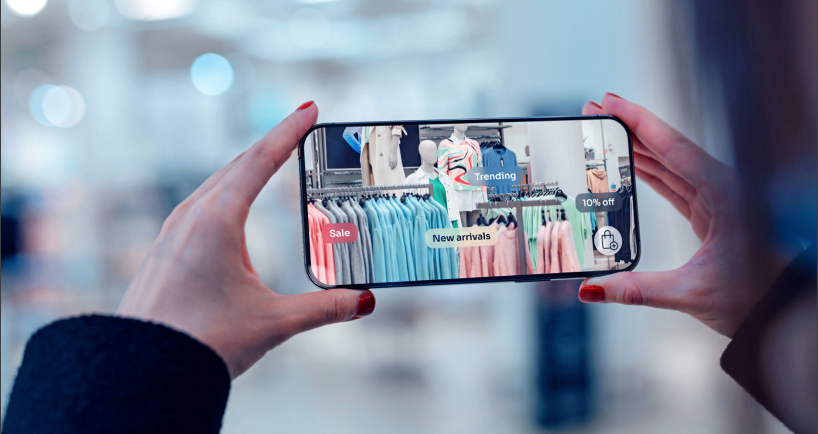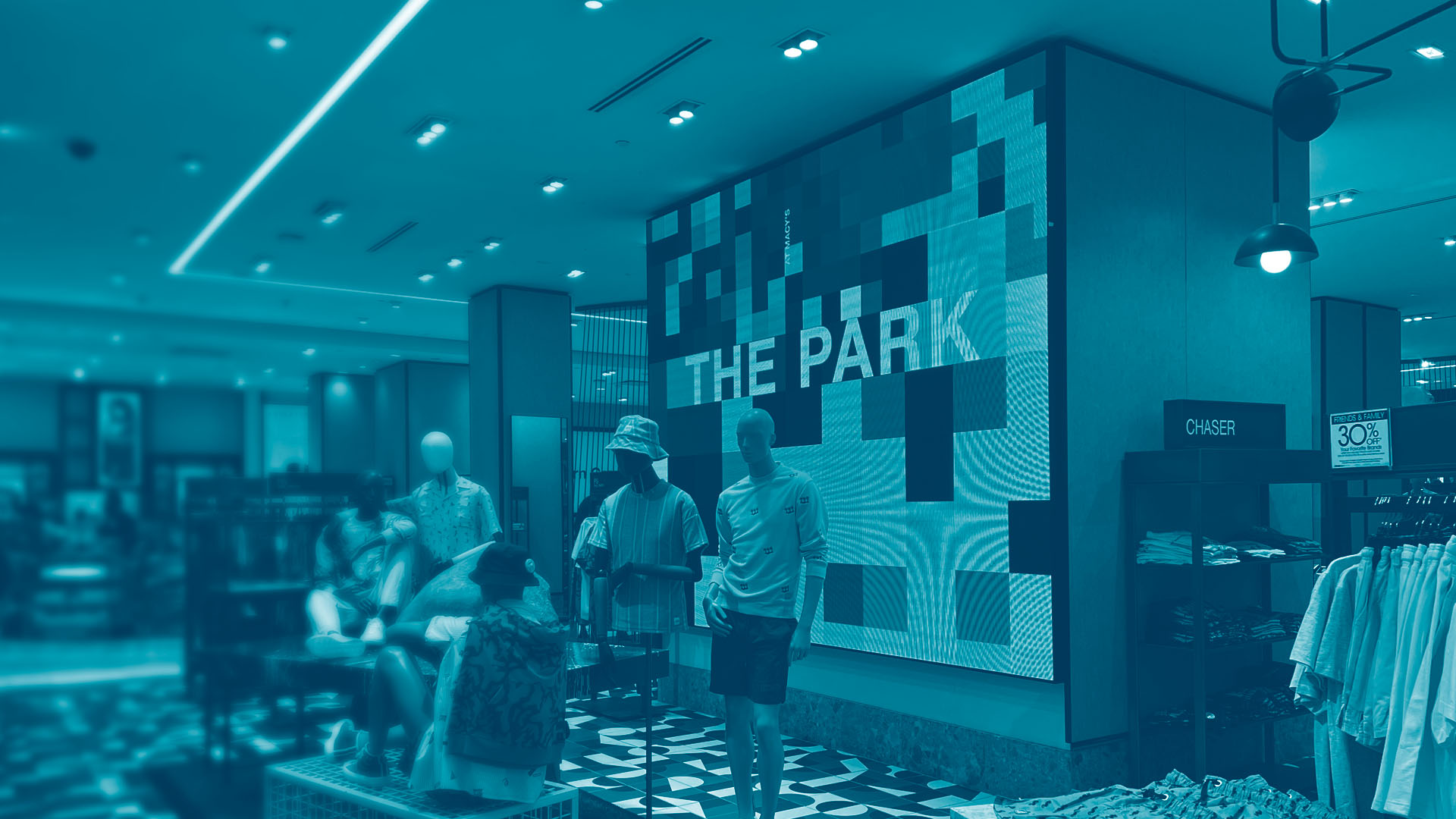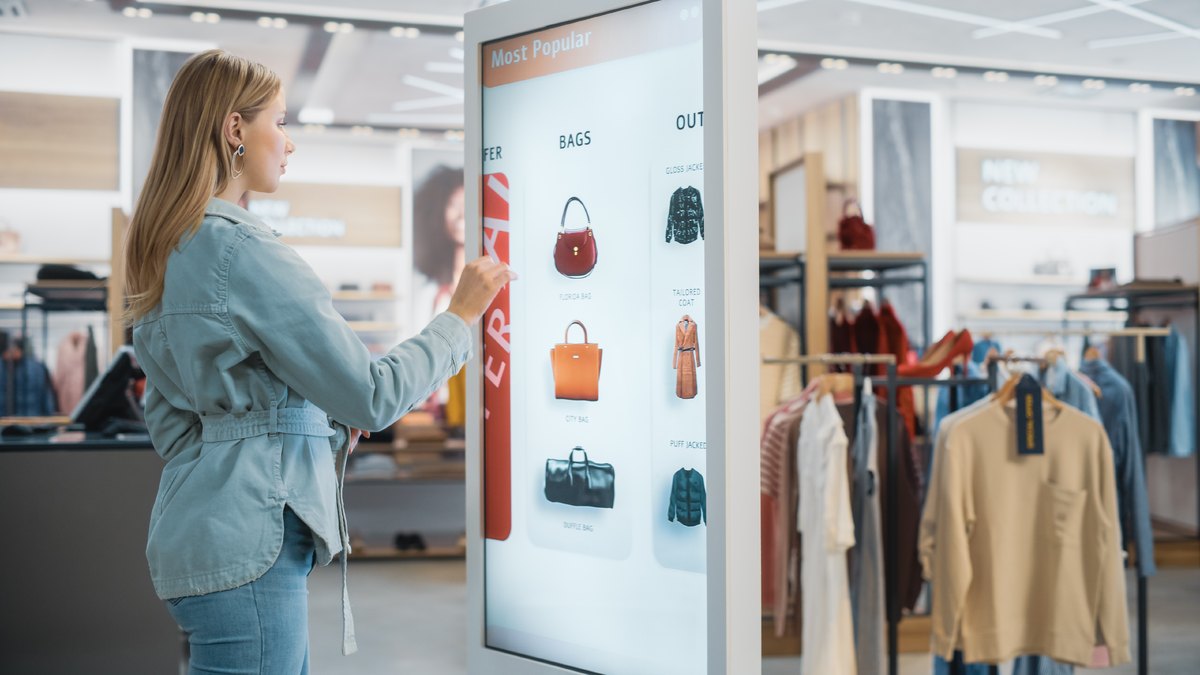Retail Redefined: 2024 predictions that may shape the digital and design experience of brick & mortar
In the world of retail, we've all heard plenty about the importance of personalization. From tailored online recommendations to curated digital touchpoints, the digital age has given rise to a plethora of ways for retail enterprises to understand and cater to individual preferences.
Consumers are seeking more authentic and tactile experiences in an era dominated by virtual interactions. While the convenience of online shopping cannot be denied, it lacks the sensory engagement and personal touch that brick-and-mortar stores provide. Shoppers are yearning for the ability to touch, feel, and try products before making a purchase, something that online retailers can never replicate fully.
In-store personalization also taps into the growing consumer desire for memorable and shareable experiences. Shoppers today are not merely looking to make transactions; they are seeking to create memories and stories associated with their purchases. The physical realm allows for spontaneous interactions, surprise discoveries, and serendipitous moments that can transform a routine shopping trip into a remarkable experience worth sharing with friends and on social media.
As we approach 2024, the in-store experience in brick-and-mortar retail is undergoing significant transformation. This rekindled interest in in-store personalization is not merely a nostalgic yearning for the past: rather, it's a response to the evolving expectations and desires of today's consumers, even in (and in part, because of) an increasingly digital age.
Here are six predictions on how in-store experience digital signage will continue to evolve in the coming year

The notion of retail spaces is transitioning from expansive to smaller, more intimate and specialized experiences. These collaborations are more than just strategic partnerships; they represent a shift in the retail experience. Indeed, the retail concept is increasingly focusing on specialized, collaborative experiences, as seen in Target's consistent partnerships with HGTV for home and style collections. These collaborations are redefining retail into a more focused, design-centric journey.
Target's collaborations with HGTV bring exclusive, designer-inspired home and style collections to the general public. By partnering with renowned HGTV designers, Target is able to offer its customers a range of products that are not only stylish but also accessible. These collections transform Target's retail space into more than just a store; they become a source of inspiration for home décor and design. Customers are drawn into an environment that feels more like a designer showroom than a typical retail space. This approach enhances the shopping experience by merging retail with interior design inspiration, making it a destination for those looking to bring a touch of designer flair into their homes.
Instead of investing in extensive renovations, retailers are adopting a modular approach, refreshing their spaces or investing in new spaces and place that allow brands to “pop up” contextually and get in front of new audiences. This trend allows retailers to offer customers a variety of experiences and choices without the need for significant capital expenditures. It's a smart way of renewing interest and increasing foot traffic while keeping the costs in check. These collaborations also boost brand affinity, as customers associate the positive experiences of one brand with the other.
Another great example of a brands collaborating to create unforgettable retail experiences can be seen in Hugo Boss’ capsule collections, which are born from collaborations with various artists, designers, and even luxury brands like Porsche, each bringing a unique aesthetic to the brand. These collections offer consumers something beyond the ordinary: one of a kind apparel that combines high fashion with art and culture. The limited availability of these collections creates a sense of exclusivity, drawing in fashion enthusiasts who are eager for unique pieces that aren't found everywhere. By turning its retail spaces into showcases of collaborative art and design, Hugo Boss not only caters to a discerning clientele but also elevates the traditional shopping experience into a journey through the realms of high fashion and avant-garde design. And spoiler alert! Hugo Boss plans to pop up this year on the grand concourse at Super Bowl LVIII – a testament to how brands and retailers continue to stretch to synch up with their audiences’ passions, to reach their fullest potential.
Retail is not just about selling products but also about selling experiences. The "test and learn" methodology is becoming crucial for retailers, emphasizing the importance of experimentation and alignment across teams. This approach allows retailers to try new ideas, gauge customer reactions, and refine their strategies in real-time.
Amazon Go stores are pioneers in the "test and learn" approach. These cashier-less stores utilize a combination of AI and sensor technology to allow customers to grab items and simply walk out, with their Amazon account being charged automatically. The concept started as a test in a single store and gradually expanded. Amazon's willingness to experiment and learn from customer behavior has been a key driver of its success in the retail space.
The monetization of digital screen space within stores presents an exciting “test and learn” opportunity. The latest wave of software enables retailers to automate the process of displaying advertisements or promotions, turning their screen space into a revenue-generating asset and maximizing the potential of every square inch of retail space.
3. Leveraging digital technology for improved retail resilienceRetailers are increasingly using digital displays to engage customers actively. These screens are no longer static billboards but interactive platforms that allow customers to explore products, access additional information, and even make purchases right from the display. For example, a home improvement store might feature a digital screen where customers can visualize different paint colors on their walls before making a purchase decision. These screens can also help drive new revenue streams through programmatic advertising, taking the notion of Retail Media into the physical store by monetizing the screens as a viable media channel.
The flexibility of digital screens enables retailers to adapt content in real-time. They can respond to changing circumstances, such as weather conditions, special events, or unexpected trends, ensuring that the content displayed remains relevant and engaging. Digital screens can also establish and improve safety measures by displaying important messages to shoppers, monitoring and managing store occupancy for social safety, and doubling as surveillance for in-store security.
Beyond revenue generation, digital screens provide valuable data and insights. Retailers can analyze customer interactions with the screens, measure the effectiveness of promotions, and gain insights into customer behavior. This data informs future marketing strategies, product placements, and store layout decisions.
4. AI-driven personalization and content automationArtificial Intelligence (AI) in retail is shifting towards more subtle and sophisticated applications. One such application is the detection of demographics and mood through facial expressions and adjusting content types accordingly. For instance, a digital display can recognize a female in her 30s and change its content to suit her potential preferences.
Nike's flagship store in New York City is a great example of this. They employ AI to create personalized shopping experiences. Using a combination of customer data and AI algorithms, the store can recommend products based on a shopper's past purchases and preferences. Moreover, interactive digital screens within the store adapt content and display products that align with the customer's demographics and mood, enhancing the overall shopping experience.
This level of personalization adds a new dimension to the shopping experience, making it more relevant and engaging for each customer, and more automated through the use of advanced CMS software and other machine learning tools
5. Endless aisles and infinite assortment: the digital-physical blend is still “a thing”The concept of 'endless aisles' represents the perfect marriage of digital and physical realms in retail. While a store might physically display a limited range of products, digital platforms within the store can showcase an extensive collection, offering customers the best of both worlds. Shoppers can experience the product physically while having access to a broader range of options digitally. This digital-physical blend caters to customers who enjoy the tactile experience of shopping in-store but also appreciate the convenience of browsing and ordering online.
Target, as mentioned earlier, is an example of a retailer that utilizes digital platforms to create compelling product combinations and themes within physical contexts so available products extend far beyond the aisles. This approach not only enhances the customer experience but also encourages exploration and discovery, leading to increased sales and customer satisfaction.
6. Sustainability and content reuseSustainability is another critical factor driving retail trends. The integration of digital elements in physical stores leads to content reuse, reducing the need for physical promotional materials and minimizing waste.
Big retailers like H&M have embraced sustainability by incorporating digital signage in their stores. Instead of printing posters and signs for promotions and sales, they use digital displays to convey the same information. This not only reduces paper waste but also allows for quick updates and changes in promotional content without the need to discard physical materials.
Data analytics at the core
At the heart of these transformative trends lies the indispensable role of data analytics. Today’s successful retailers are no longer solely merchants—they are data-driven strategists. By harnessing the power of data, they gain a profound understanding of customer behaviors, preferences, and purchasing patterns. This insight allows them to craft in-store experiences that are not just personalized but also finely attuned to the dynamic needs of their clientele.
In this age of retail renaissance, the integration of digital innovations into physical spaces is imperative. The retailers who wholeheartedly embrace these advancements and employ data intelligently are poised to reshape the shopping landscape. Their stores transcend mere transactional spaces, evolving into sought-after destinations where customers come not only for products but for immersive and tailor-made experiences. These savvy retailers don't merely cater to shoppers; they anticipate their desires, engage their senses, and leave a lasting imprint on their memory.
In a world increasingly dominated by screens and algorithms, the physical store continues to be a destination enjoying a refreshing departure. It's a return to the roots of retail, where the customer's needs and desires were at the forefront, and every shopping trip was an adventure. As we journey further into 2024, the retail industry is poised to rediscover the profound impact of the magic that magnetizes shoppers and shapes new opportunities for resilience and revenue.
Share this
You May Also Like
These Related Stories

How Retail Media Networks Strengthen In-Store Messaging

Choosing a CMS That Keeps Up with Your Brand: What Retailers Need in a Scalable Signage Platform


